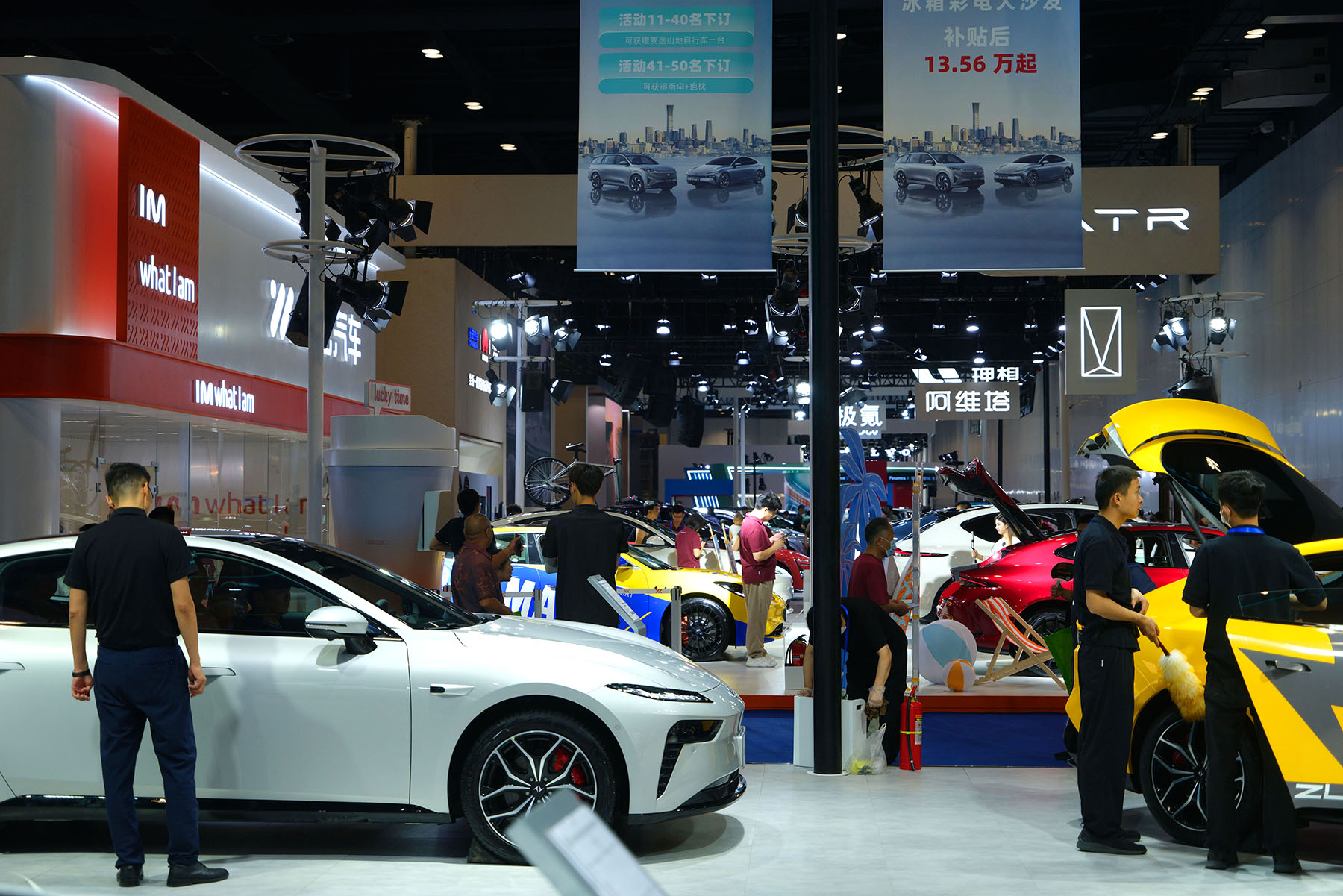Local trade-in programs help boost sales of appliances, cars and other goods

China’s local fiscal authorities are stepping up efforts to promote household consumption with stronger support from the central government amid the country’s broader push for domestic demand expansion to drive economic growth.
The central government earmarked 150 billion yuan ($20.88 billion) in the second half of 2024 from the issuance of ultra-long-term special treasury bonds to support a nationwide consumer goods trade-in program. The program offered direct subsidies to people buying new household appliances and automobiles, among other products.
Following notable success in stimulating demand, China is expanding the program in 2025. A total of 300 billion yuan in ultra-long-term special treasury bonds will be issued to further support the large-scale replacement of consumer goods.
As part of this effort, the central government has already disbursed two tranches of special bond funds to local authorities — amounting to 162 billion yuan in total — during January and April.
So far, the program has not only directly benefited millions of consumers but also fueled growth among retailers and manufacturers, injecting vitality into the domestic market and supporting stable economic performance.
In Jinan, capital of Shandong province, Xu Chao, director of a JD Electronics flagship store, recalled that when the store opened in November 2023, its sales target for the year was 40 million yuan.
“To our surprise, thanks to the government’s appliance trade-in program, we surpassed 100 million yuan in sales within just two months,” Xu said.
And this year, with the continuation of the subsidies and the expansion of eligible categories to include digital products such as smartphones, the store has once again seen strong performance — reaching over 100 million yuan in sales in the first four months alone.
“During the May Day holiday, sales on May 1 alone hit nearly 10 million yuan. The momentum has not only boosted business for retailers like us, but also strengthened confidence among upstream manufacturers,” Xu added.

In Pingyuan county, Dezhou, Shandong, Xie Jing, who had been driving the same car for over a decade, recently decided to trade it in for a new energy vehicle.
“I heard about the trade-in subsidies and found out I could get a combined discount of 50,000 yuan from the government and the dealership. That really sealed the deal for me,” she said.
Zhu Jielong, general manager of Shandong Changshuo Auto Sales & Service Co, said the trade-in program has significantly boosted auto sales.
“Sales doubled in the second half of last year. Traditionally, the first half of the year is a slower season, but even in the first quarter of this year, our sales doubled again and continue to grow rapidly,” Zhu said.
To motivate local governments while maintaining fiscal sustainability, the trade-in program adopts a cost-sharing model, with the central government covering the bulk of the funding.
Nationally, the central-local responsibility-sharing ratio follows a general 9:1 structure. The central government covers 85 percent of funding in eastern regions, 90 percent in central regions, and 95 percent in western regions.
The trade-in program for consumer goods has been significant in boosting consumption recovery. In Shandong, total retail sales of consumer goods reached 3.8 trillion yuan in 2024, up 5 percent year-on-year — 1.5 percentage points higher than the national growth rate.
The first months of the year saw Chongqing firmly implement subsidy policies for vehicles and household appliance trade-ins, among others. In addition, the municipality has introduced new policies regarding subsidies for purchasing mobile phones and other digital products.
In the first quarter, Chongqing recorded 420.4 billion yuan in total retail sales of consumer goods, up 4.1 percent year-on-year — 0.5 percentage points higher than the growth rate for full-year 2024.
A prime example is the JD Mall located in the city’s Jiulongpo district, the largest of its kind nationwide, which officially opened on June 15, 2024.
Before the introduction of national subsidies, the mall had already achieved 240 million yuan in transactions. After receiving layered subsidies from central, municipal and district-level budgets, sales surged to 455 million yuan.
In Nan’an district of Chongqing, the local government provided 152 million yuan in trade-in subsidies for vehicles, home appliances and furniture, benefiting over 600 businesses and generating 6.92 billion yuan in sales.
An additional 93 million yuan was invested in upgrading Nanping commercial pedestrian street to create a higher-quality consumption environment and cultivate new consumption growth engines, injecting fresh momentum into the district’s high-quality development.
Local fiscal authorities have also tailored the implementation of the trade-in program policy to meet local needs, and streamlined subsidy review and disbursement procedures to improve policy execution and efficiency.
In implementing the vehicle trade-ins, Shandong has optimized the subsidy disbursement process by adjusting the original “municipal government review-provincial government recheck-subsidy issuance” sequence to a more streamlined “municipal government review-subsidy issuance-provincial government recheck” model. This has shortened application times, enabling consumers to enjoy the policy benefits more quickly and efficiently.
To further reduce financial burdens on participating businesses, Shandong also launched a prepayment mechanism for home appliance trade-in subsidies. Companies may receive up to 80 percent of funds in advance, easing cash flow pressure and encouraging broader participation in the initiative.
In late April, the Ministry of Commerce said that since the enhanced home appliance trade-in program was launched last August, consumers had purchased over 100 million units of new home appliances using the program.
In May, sales of home appliances, communication devices, cultural and office supplies, and furniture by major firms rose 53 percent, 33 percent, 30.5 percent and 25.6 percent year-on-year respectively.
The National Development and Reform Commission said that in May, China’s total retail sales of consumer goods rose 3.7 percent year-on-year, accelerating by 1.4 percentage points compared with the previous month.
Contact the writers at liuzhihua@chinadaily.com.cn


